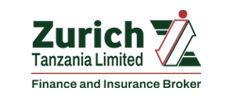Tanzania’s Insurance Gap: Challenges, Opportunities and Solutions
By the Financial Sector Deepening Tanzania (FSDT), in collaboration with Dr. Deogratius Joseph Mhella, Global Political Economy and Financial Inclusion Expert, University of Fordham (New York – USA), and Former Researcher at University of Bristol (Bristol- UK)
Insurance plays an important role in financial security, offering protection against unforeseen risks and helping individuals and families manage economic shocks. In Tanzania, however, the adoption of formal insurance remains low and has even declined in recent years, from 15% in 2017 to just 10% in 2023 according to FinScope Tanzania reports. This is despite nearly 90% of Tanzanians agreeing that insurance is necessary and 75% acknowledging it as a good idea.
Understanding this contradiction—where many recognize the value of insurance, but few adopt it—is essential to addressing the barriers to greater uptake. Insights from the FinScope Tanzania 2023 survey and accompanying focus group discussions (FGDs) reveal a combination of cost, distrust, limited awareness, and service quality concerns as key obstacles. Addressing these issues requires collaborative efforts by policymakers, insurers, and community leaders to build a more inclusive and effective insurance ecosystem.
As the Financial Sector Deepening Tanzania (FSDT) celebrates its 20-year anniversary this year, it’s important for us in the financial sector to take a moment to reflect on the past achievements, including noteworthy success and persistent challenges to shape the future of financial inclusion in Tanzania for the coming years. We will do so by releasing a series of articles exploring how various industries in the financial sector have fared over the past 20 years. In this article, we will focus on the insurance industry.
Barriers to insurance uptake
Cost remains the primary barrier to insurance uptake, with 55% of respondents citing inability to afford premiums as the main reason for not having health insurance. For example, a respondent from Mazungwe, Kigoma, stated: “I did not renew my health insurance because of lack of money. I could not get 30,000 urgently to renew. It has now been more than two years. I know the importance of insurance coverage and I will pay even now if I get the money.” Such financial constraints are particularly pronounced in rural areas, where only 6% of residents have insurance coverage, compared to 13% of urban dwellers.
Distrust in insurance providers is widespread, fuelled by poor experiences with claims and perceived inefficiencies in healthcare services for insured patients. A participant from Dodoma noted: “I pay for insurance, but when I go to the hospital, I wait in a queue, and the person with out-of-pocket money gets services easily.” Another participant added: “Even with insurance, we had to buy 90% of the medicine out-of-pocket. It was not worth it.” These experiences discourage further enrolment and reinforce scepticism about the value of insurance.
Limited understanding of how insurance works remains a significant barrier. Nearly half of Tanzanians report not understanding insurance products, and many doubt whether insurers will reliably pay claims. Education levels also play a role: individuals who have completed their primary education are more likely to have health insurance.
In the absence of formal insurance, many Tanzanians rely on community-based risk-sharing networks rooted in ujamaa (communal solidarity). About 83% of Tanzanians believe these networks are essential for managing shocks such as illness or natural disasters. A participant from Pemba Kaskazini summarized this perspective: “When a shock happens, the important thing is that we cooperate all together to help our neighbour who has been affected.” Such systems provide immediate support, but their effectiveness is limited during widespread crises like floods or droughts.
While scepticism toward insurance is widespread, there are also positive perspectives. A participant from Mwanza explained: “The reason I acquired insurance is that I saw the importance when my child got very ill, we would pay a lot of money in a single day. After that, I learned it is better to have insurance which you can use for one year.” Such experiences demonstrate the potential for insurance to reduce financial burdens during health crises.
Finding solutions
The low adoption of insurance in Tanzania reflects a mix of economic, structural, and social challenges. However, the solutions to these issues are within reach. The recommendations outlined in the FinScope Tanzania survey and focus group discussions highlight practical and targeted steps that can address these barriers. By focusing on education, trust, affordability, and service quality, stakeholders can create an inclusive and effective insurance ecosystem.
A crucial first step is to promote public education about insurance. Many Tanzanians do not fully understand how insurance works or its potential benefits. One respondent noted: “If people understood how insurance works, maybe they would use it more than they do now.”
To address this, public awareness campaigns should employ simplified communication strategies, leveraging local languages and culturally relevant examples. These campaigns can demystify insurance products and highlight how they provide financial security. Trusted community leaders, religious figures, and local organizations should be involved in spreading this information, particularly in rural areas where knowledge gaps are most significant. Education campaigns should also emphasize practical examples of how insurance can protect against common risks, such as health emergencies or crop failures, to make the concept relatable.
Building trust in insurance providers is equally essential. Distrust remains a significant barrier, fueled by experiences of delays, bureaucracy, and perceived inefficiencies. To overcome this, insurers must adopt more transparent practices. Clearly communicating policy terms, claims processes, and customer rights can go a long way in rebuilding public confidence. Moreover, improving customer service is critical. Insurers must ensure timely payouts, resolve complaints efficiently, and demonstrate accountability in their interactions with clients. Visible efforts to address past grievances and deliver on promises can gradually transform scepticism into confidence.
Affordability is another area requiring attention. The high cost of insurance premiums is a primary reason why many Tanzanians opt out of coverage, particularly in low-income and rural households. Policymakers and insurers should work together to design affordable insurance products that cater to the needs of these segments. For instance, introducing community-based health insurance models, which pool resources at a local level, could make coverage more accessible. Subsidies and tax incentives could also play a role in reducing costs, especially for informal sector workers who are typically excluded from formal financial systems. Partnerships between the government and private insurers could further facilitate the creation of innovative, low-cost options.
Equity in service delivery is a key focus area. Disparities between insured individuals and those paying out-of-pocket undermine the perceived value of insurance. Insured patients often report delays in treatment or limited access to medication, experiences that discourage continued enrolment. Addressing these inequities requires systemic reforms to ensure that insured individuals receive the same quality and timeliness of care as other patients. Streamlining claims processing, improving reimbursement systems, and enhancing healthcare infrastructure for insured services can help achieve this goal.
Technology offers significant potential to transform the insurance landscape in Tanzania. Digital platforms can simplify many aspects of the insurance process, from enrolment to claims handling. Mobile technology, which is already widespread, can be harnessed to reach underserved populations in rural areas. For example, mobile apps or SMS-based systems could allow individuals to register for insurance, make payments, and file claims without visiting an office. Digital tools can also help insurers analyse customer data to better understand their needs and design more relevant products. Such innovations can make insurance more accessible, efficient, and customer friendly.
Integrating formal insurance with existing community-based mechanisms is another promising avenue. Instead of viewing these systems as competing alternatives, stakeholders should explore ways to combine their strengths. For instance, community leaders who already manage informal risk-sharing networks could act as intermediaries, helping to bridge the gap between insurers and potential clients. These leaders can play a vital role in building trust, educating community members, and facilitating enrolment in formal insurance schemes. Hybrid models that blend formal and informal systems could provide comprehensive risk coverage while retaining the immediacy and trust of community-based approaches.
Microinsurance schemes tailored to specific needs, such as agriculture or health, can also expand coverage. These products are particularly relevant in rural areas, where risks like crop failure or livestock loss are common. By addressing specific, tangible concerns, microinsurance can serve as an entry point for populations traditionally excluded from formal insurance systems. Over time, people may develop greater trust and familiarity with insurance, opening the door to broader adoption.
Collaboration among stakeholders is essential to achieving these goals. Policymakers, insurers, healthcare providers, community leaders, and technology developers must work together to create solutions that address the unique needs of Tanzania’s diverse population. This requires a coordinated approach to policy development, product design, and service delivery.
By implementing these recommendations, Tanzania can begin to close the insurance gap and unlock the potential of formal insurance as a tool for financial security. The road ahead will require sustained effort and commitment, but the benefits—greater resilience, reduced vulnerability to economic shocks, and improved quality of life—are well worth pursuing.
Through these efforts, insurance can become a vital tool for enhancing resilience and improving the quality of life for Tanzanians. As one participant succinctly put it: “Insurance, if done right, is not just a product—it’s a lifeline.”


